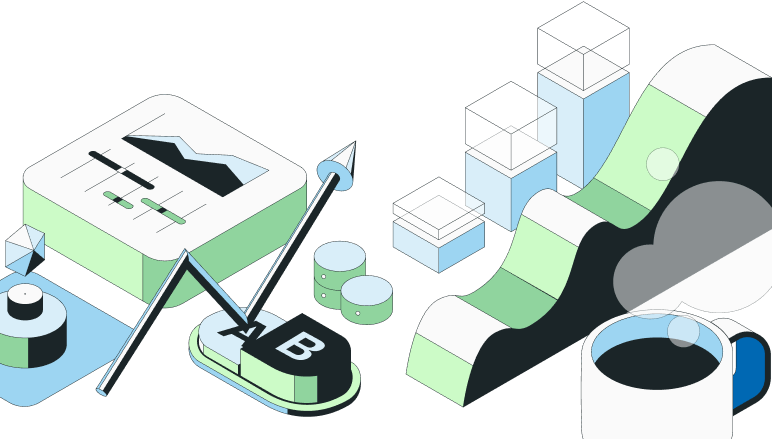In the fast-paced world of software development, monitoring is crucial for maintaining system health and delivering exceptional user experiences. However, gathering comprehensive data from various sources can be a daunting task. This is where API integrations come into play, revolutionizing the way we approach monitoring.
By leveraging APIs, you can seamlessly integrate your existing monitoring tools, unlocking a wealth of valuable data. These integrations enable you to effortlessly gather performance metrics, usage statistics, and system health information, providing a holistic view of your application's behavior.
Leveraging APIs for comprehensive data collection
API integrations for monitoring offer a game-changing approach to data collection. By connecting your monitoring tools to relevant APIs, you can tap into a rich repository of information. These APIs act as gateways, allowing you to access real-time data from various sources, such as performance monitoring platforms, web analytics tools, and infrastructure providers.
The beauty of API integrations lies in their seamless nature. With just a few lines of code, you can establish a connection between your monitoring system and the desired APIs. This eliminates the need for manual data retrieval and ensures that your monitoring solution always has access to the most up-to-date information.
By leveraging APIs, you can gather a wide range of metrics and data points. For example, you can retrieve performance metrics such as response times, error rates, and resource utilization. This data empowers you to identify bottlenecks, optimize your application's performance, and ensure a smooth user experience.
APIs also enable you to collect usage data, providing valuable insights into how your application is being utilized. You can track user behavior, feature adoption, and engagement levels. This information helps you make data-driven decisions, prioritize development efforts, and align your product with user needs.
Moreover, API integrations allow you to monitor the health of your system in real-time. You can retrieve data on server status, network connectivity, and resource availability. By having instant access to this information, you can quickly detect and resolve issues, minimizing downtime and ensuring the reliability of your application.
The power of API integrations for monitoring lies in their ability to provide a comprehensive view of your system. By aggregating data from multiple sources, you can gain a holistic understanding of your application's performance, usage patterns, and overall health. This level of visibility is essential for making informed decisions, identifying trends, and proactively addressing potential issues.
Implementing effective alerting systems
Alerting is crucial for proactively identifying and resolving issues in production systems. Set up alerts with specific thresholds to notify you when critical conditions are met. For example, if no emails are sent in a job application system, it may indicate a problem.
Utilize multiple notification channels like email, text messages, and team chat rooms for timely issue resolution. This ensures the right people are informed promptly when an alert is triggered. Balancing alert frequency is key to maintaining an optimal signal-to-noise ratio and preventing alert fatigue.
Effective alerting systems should not only notify you of existing problems but also predict potential issues. For instance, if memory usage exceeds a certain percentage, it might suggest a memory leak. By setting up proactive alerts, you can intervene early, such as addressing the memory issue or bringing a backup server online.
When implementing alerting for API integrations used in monitoring, consider the following:
Define clear thresholds for API response times, error rates, and data discrepancies
Set up alerts for API authentication failures or rate limit breaches
Monitor API availability and send notifications for prolonged downtime
Integrating alerts from various API sources can provide a comprehensive view of system health. Combine alerts from performance monitoring, web analytics, and infrastructure APIs to correlate data and identify root causes more effectively. Use API integrations to centralize alerting in a single platform, making it easier to manage and respond to incidents.
Enhancing AI strategies with observability
Integrating observability into your AI strategies is crucial for effective implementation and management. By leveraging observability, you gain real-time insights into the performance and data quality of your AI systems. This enables you to proactively identify and address issues, ensuring optimal performance and reliability.
Observability provides a comprehensive view of your AI infrastructure, allowing you to monitor key metrics and detect anomalies. With real-time monitoring, you can quickly identify bottlenecks, performance degradation, or data inconsistencies. This empowers you to take prompt action, minimizing the impact on your AI applications and maintaining a seamless user experience.
API integrations play a vital role in enhancing observability for AI monitoring. By integrating observability tools with your existing systems through APIs, you can centralize data collection and analysis. This enables you to correlate data from various sources, gaining a holistic view of your AI ecosystem.
Leveraging API integrations for monitoring allows you to scale your AI deployments with confidence. As your AI systems grow in complexity and handle increasing volumes of data, observability ensures that you can effectively manage and optimize performance. With real-time insights, you can dynamically allocate resources, ensuring optimal utilization and cost-efficiency.
Moreover, observability is essential for maintaining the security of your AI systems. By monitoring for anomalous behavior and potential security threats, you can proactively detect and mitigate risks. API integrations enable you to integrate observability data with your security tools, enhancing threat detection and response capabilities.
Embracing observability in your AI strategies fosters a culture of continuous improvement. By gaining visibility into the inner workings of your AI systems, you can identify areas for optimization and refinement. This iterative approach allows you to continuously enhance the performance, reliability, and effectiveness of your AI applications.
Real-time insights: Gain immediate visibility into AI performance and data quality.
Proactive issue detection: Identify and address problems before they impact users.
Scalability and optimization: Efficiently manage and optimize AI deployments at scale.
Enhanced security: Monitor for anomalies and potential security threats in real-time.
By integrating observability into your AI strategies, you unlock the full potential of your AI investments. With real-time insights, proactive issue detection, and the ability to scale and secure your deployments, you can confidently navigate the complexities of AI implementation and drive successful outcomes.
Incorporating security observability in systems
Detecting authentication vulnerabilities and potential security threats proactively is crucial for maintaining system security. By leveraging distributed tracing and logging, you can identify issues early and take corrective action. Monitoring user navigation through your application ensures authentication components aren't bypassed.
Utilizing AI and machine learning for pattern recognition in security data helps identify anomalies and potential threats. These tools establish dynamic thresholds for different metrics, allowing quick response to emerging patterns. Proactively addressing security risks is essential for effective vulnerability management.
Implementing preemptive measures to protect systems from evolving threats is key to maintaining a strong security posture. API integrations for monitoring enable you to gather data on known vulnerabilities and inform your threat modeling process. By tracking system changes and testing impacts, you can address vulnerabilities before they can be exploited.
Observability tools provide a comprehensive view of your security stance:
Metrics aggregate event counts over time, useful for detecting security incidents like SQL injection attacks or DoS attacks
Logs offer granular details of every action within an application, aiding in security issue investigation
Traces connect events, helping understand how malicious users breach systems by following requests through systems
Visualizations from observability platforms identify anomalies, aiding in vulnerability management by showing aggregated security signals
Incorporating API integrations for monitoring and observability techniques is essential for modern applications. By detecting and preventing vulnerabilities while managing security risks, you can ensure the integrity and protection of your systems. Proactive measures and leveraging advanced tools will help you stay ahead of evolving threats.
Optimizing performance with real-time monitoring
Real-time performance monitoring is essential for managing modern applications effectively. By analyzing granular metrics across the entire technology stack, you gain comprehensive visibility into your system's health. This allows you to identify bottlenecks, track app performance, and receive alerts on critical issues.
API integrations enable you to aggregate data from various sources, providing a holistic view of your application's performance. Datadog, for example, offers over 750 integrations, allowing you to create customizable dashboards to visualize and correlate performance metrics. This empowers you to make data-driven decisions and optimize your application's performance.
Visualizing application traces provides in-depth insights into your system's behavior. By tracing requests across distributed systems, you can pinpoint performance issues and identify areas for improvement. API integrations for monitoring tools like Datadog enable you to seamlessly integrate traces, metrics, and logs into a single platform.
Collaborative troubleshooting is crucial for resolving issues quickly and efficiently. Real-time monitoring platforms facilitate teamwork by allowing teams to work on events and outages simultaneously. By referencing historical conversations, you can understand the evolution of issues and make informed decisions.
Logging is another powerful method for gathering valuable data about your systems. By implementing searchable logs through log forwarding and structured logging, you can easily analyze and visualize data over time. Tools like Splunk and ElasticSearch optimize search, aggregation, and visualization based on structured logs.
Metrics complement logging by providing aggregated information about system events. API integrations for monitoring tools like statsd enable you to count system events and send aggregated data to platforms like Datadog. This allows you to monitor technical metrics, such as CPU load and memory usage, as well as business metrics, such as application submissions.
Setting up an effective alerting system ensures that the data you gather is actionable. Alerts notify teams about production issues, allowing for prompt resolution and minimal user impact. By setting appropriate thresholds and delivering alerts through various channels, you can proactively address potential problems before they escalate.
Featured
Build fast?
Recent Posts
Announcing the Statsig <> Azure AI Integration
The Statsig <> Azure AI Integration is a powerful solution for configuring, measuring, and optimizing AI applications. Read More ⇾
Building an experimentation platform: Assignment
Take an inside look at how we built Statsig, and why we handle assignment the way we do. Read More ⇾
Decoding metrics and experimentation with Ron Kohavi
Learn the takeaways from Ron Kohavi's presentation at Significance Summit wherein he discussed the challenges of experimentation and how to overcome them. Read More ⇾
It’s normal not to be normal(ly distributed): what to do when data is not normally distributed
Learn how the iconic t-test adapts to real-world A/B testing challenges and discover when alternatives might deliver better results for your experiments. Read More ⇾
How the engineers building Statsig solve hundreds of customer problems a week
See how we’re making support faster, smarter, and more personal for every user by automating what we can, and leveraging real, human help from our engineers. Read More ⇾
Enhanced marketing experiments with Statsig Warehouse Native
Marketing platforms offer basic A/B testing, but their analysis tools fall short. Here's how Statsig helps you bridge the gap and unlock deeper insights. Read More ⇾






